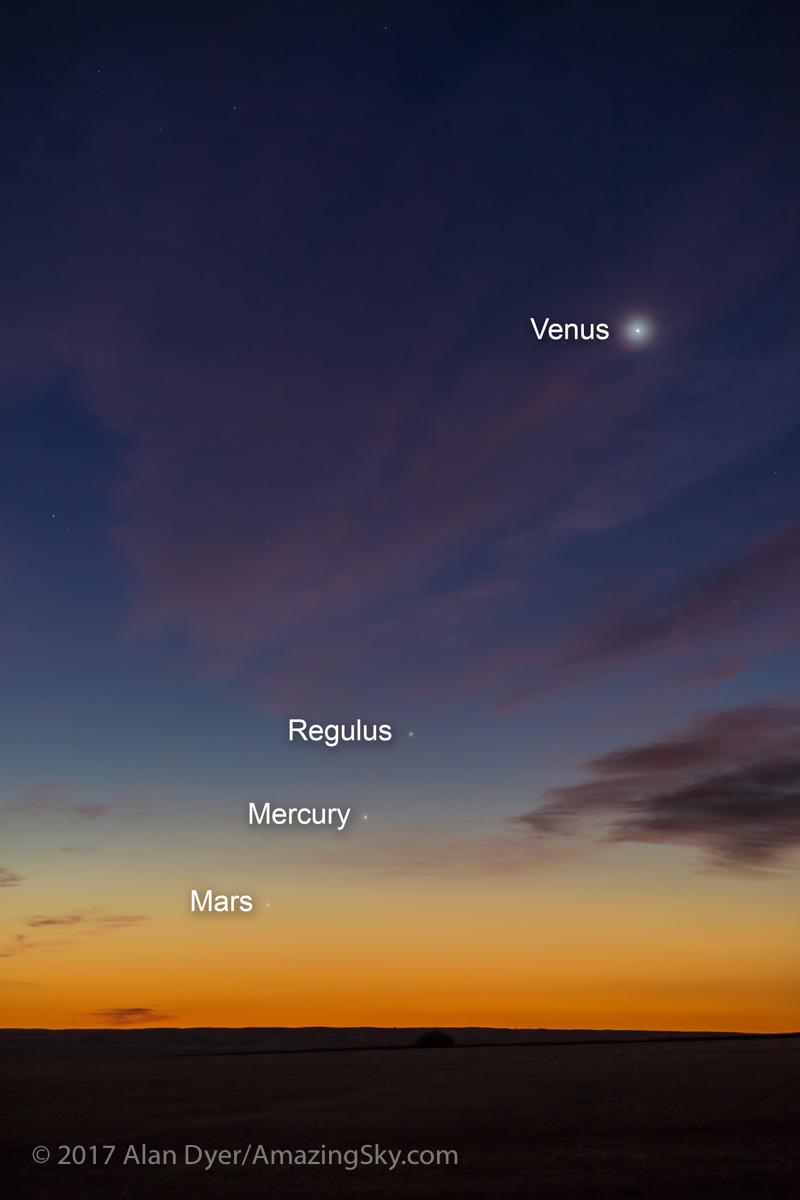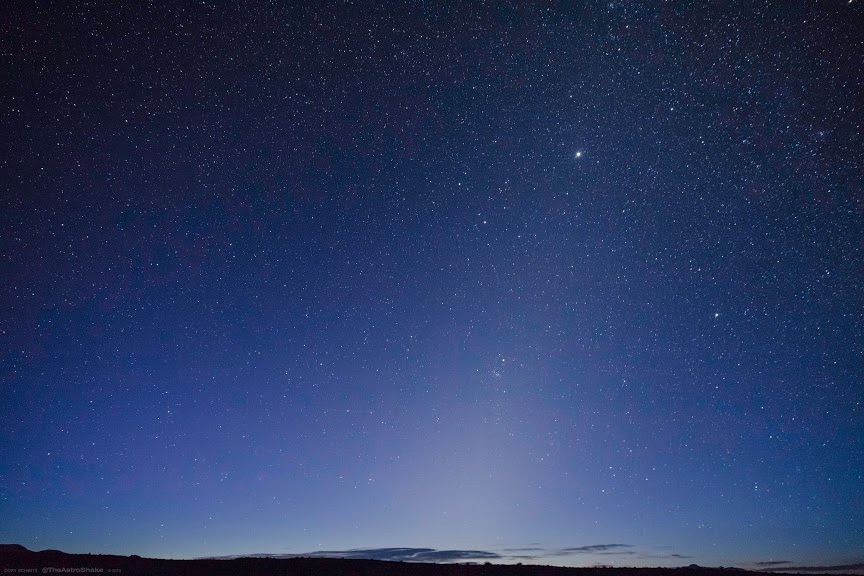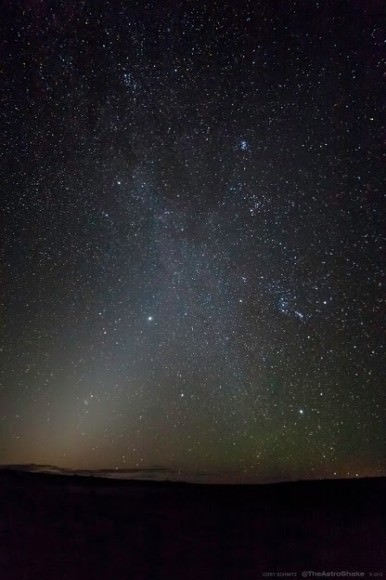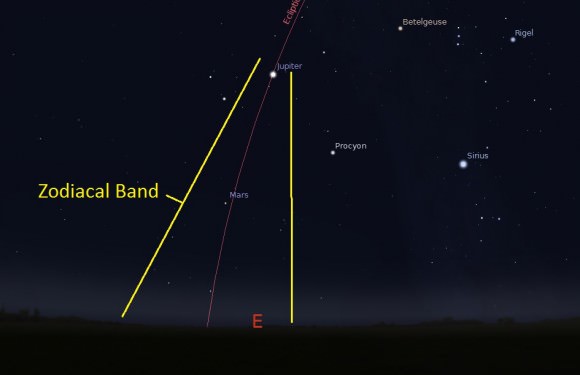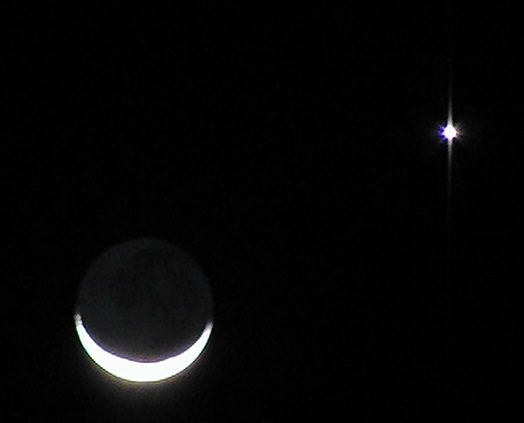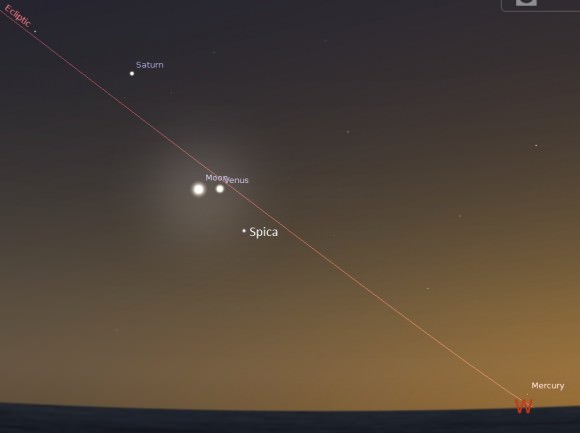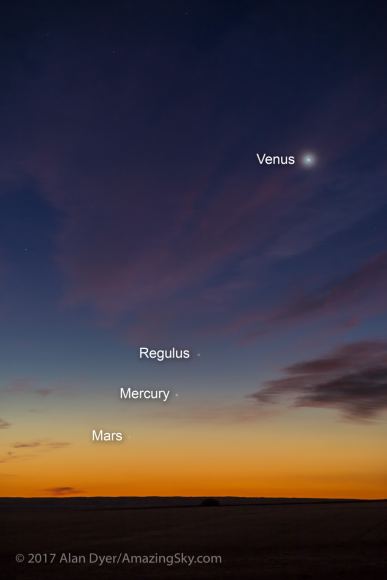
Following the Moon and wondering where are the fleeting inner solar system planets are this month?
While Jupiter and Saturn sink into the dusk on the far side of the Sun this month, the real action transpires in the dawn sky in mid-September, with a complex set of early morning conjunctions, groupings and occultations.
First, let’s set the stage for the planetary drama. Mercury just passed greatest elongation 18 degrees west of the Sun on September 12th.
The action warms up with a great pre-show on the morning of Saturday, September 16th, when the closest conjunction of two naked eye planets for 2017 occurs, as Mercury passes just 3′ north of Mars. The conjunction occurs at 16:00 UT, favoring the western Pacific region in the dawn hours. The pair is just 17 degrees from the Sun. As mentioned previously, this is the closest conjunction of two naked eye planets in 2017, so close the two will seem to merge to the naked eye and make a nice split with binoculars. This is also one of the first good chances to spy Mars for this apparition, fresh off of its solar conjunction on July 27th, 2017. Mars is now headed towards a favorable opposition next summer on July 27th, 2018, one that’s very nearly as favorable as the historic grand opposition of 2003.
Mars shines at magnitude +1.8 on Saturday morning with a disk 3.6” across, while Mercury shines at magnitude +0.05 with a 64% illuminated disk 6.4” across. Mars is actually 389 million km (2.6 AU) from the Earth this weekend, while Mercury is 158 million km (1.058 AU) distant.
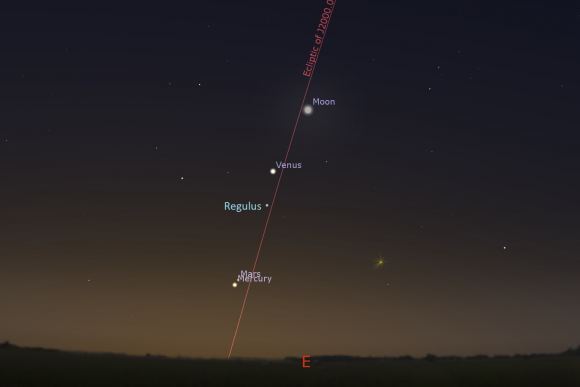
Follow that planet, as Mars also makes a close (12′) pass near Venus on October 5th. At the eyepiece, Venus will look like it has a large moon, just like the Earth!
Think this pass is close? Stick around until August 10th, 2079 and you can actually see Mercury occult (pass in front of) Mars… our cyborg body should be ready to download our consciousness into by then.
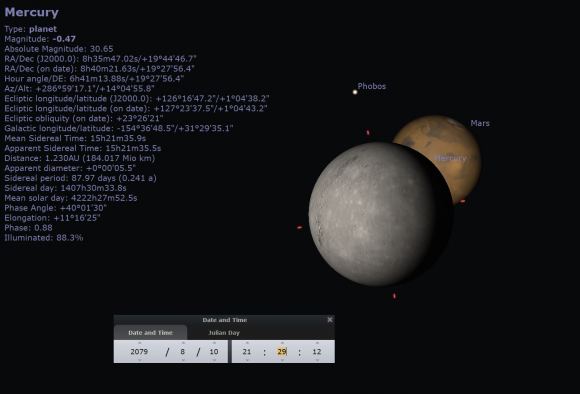
The waning crescent Moon joins the view on Monday, September 18th, making a spectacular series of passes worldwide as it threads its way through the stellar-planetary lineup. Occultations involving the waning Moon are never as spectacular as those involving the waxing Moon, as the bright limb of the Moon leads the way for ingress instead of the dark edge. The best sight to behold will be the sudden reappearance of the planet of star (egress) from behind the waning crescent Moon’s dark limb.
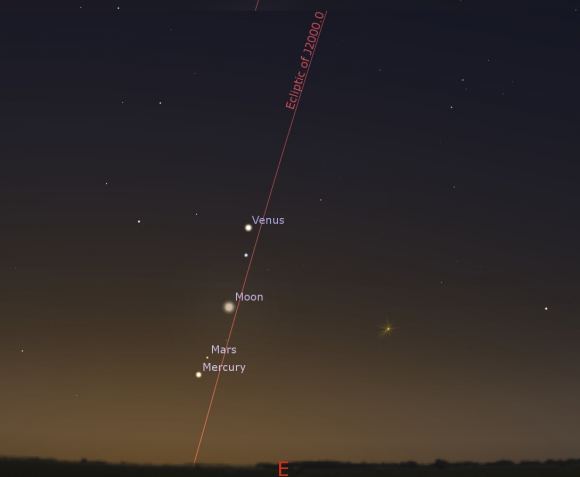
First up is an occultation of Venus on September 18th centered on 00:55 UT. Unfortunately, this favors the eastern Indian Ocean at dawn, though viewers in Australia and New Zealand can watch the occultation under post dawn daytime skies. The pair is 22 degrees west of the Sun, and the Moon is two days from New during the event. Shining at magnitude -4, it’s actually pretty easy to pick out Venus near the crescent Moon in the daytime. Observers worldwide should give this a try on the 18th as well… folks are always amazed when I show them Venus in the daytime. The last time the Moon occulted Venus was September 3rd, 2016 and the two won’t cross paths again until February 16th, 2018.
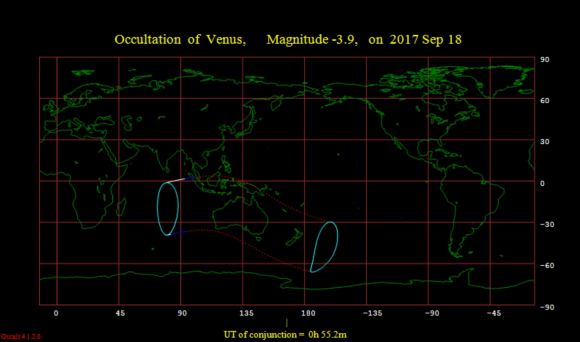
Next up, the Moon occults the +1.4 magnitude star Regulus on the 18th at 4:56 UT. Observers across north-central Africa are best placed to observe this event. This is the 11th occultation of Regulus by the Moon in a series of 19, spanning December 2016 to April 2018.
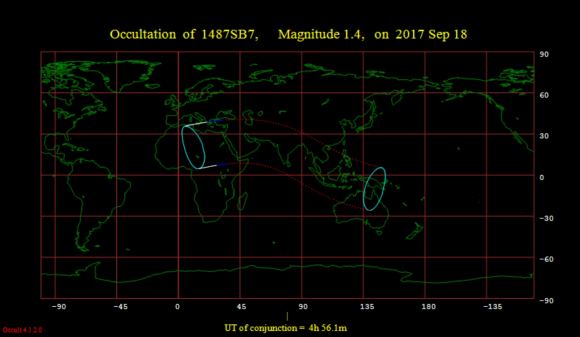
The brightest star in the constellation Leo, Regulus is actually 79 light years distant.
Next up, the dwindling waning crescent Moon meets the Red Planet Mars and occults it for the western Pacific at 19:42 UT. Shining at magnitude +1.8 low in the dawn sky, Mars is currently only 3.6” in size, a far cry from its magnificent apparition next summer when it will appear 24.3” in size… very nearly the largest it can appear from the Earth.
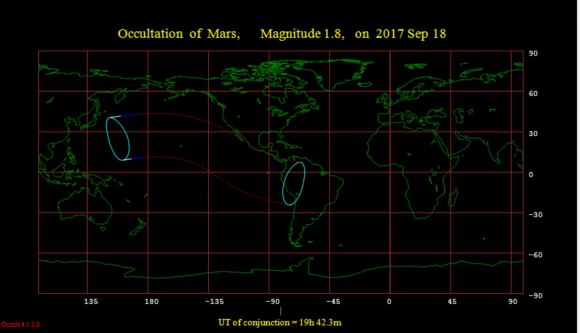
And finally, the slim 2% illuminated Moon will occult the planet Mercury on September 18th centered on 23:21 UT.
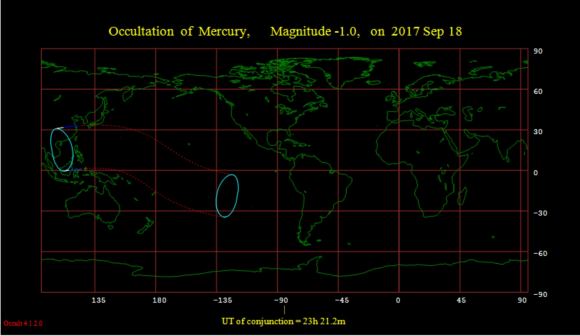
Mercury occultations are tough, as the planet never strays very far from the Sun. The only known capture I’ve seen was out of Japan back in 2013:
This week’s occultation favors southeast Asia at dawn, and the pair is only 16 degrees west of the Sun. Mercury is gibbous 74% illuminated and 6” in size during the difficult occultation.
We just miss having a simultaneous “multiple occultation” this week. The Moon moves at the span of its half a degree size about once every hour with respect to the starry background, meaning an occultation must occur about 60 minutes apart for the Moon to cover two planets or a planet and a bright star at the same time, a rare once in a lifetime event indeed. The last time this transpired, the Moon covered Venus and Jupiter simultaneously for observers on Ascension Island on the morning of April 23rd 1998.
When is the next time this will occur? We’re crunching the numbers as we speak… watch this space!
Looking into next week, the Moon reaches New phase on Wednesday, September 20th at 5:31 UT/1:31 AM EDT, marking the start of lunation 1172. Can you spy the razor thin Moon Wednesday evening low to the west? Sighting opportunities improve on Thursday night.
Don’t miss this weekend’s dance of the planets in the early dawn sky, a great reason to rise early.
Read about conjunctions, occultations, tales of astronomy and more in our free guide to the Top 101 Astronomical Events for 2017 from Universe Today.

